What Is a Tech Stack?
A tech stack is meant by an amalgamation of technologies that a company adopt to build and run its applications or projects. It is also known as ‘solutions stack’. A tech stack can consist of programming languages, frameworks, database, front-end tools, back-end tools, and applications connected via Application Programming Interface (API).
If you are building your FinTech product, it is critical to consider what you want to achieve, the non-functional requirements and the technologies you want to pick. These considerations will play a huge part in your product’s performance and the creation process.
Types Of Tech Stacks
Frontend Tech Stack
The frontend is meant by client-side technology – what users will interact with. It focuses on graphics, user experience and behavior. It is what your consumers see (the design) and interact (navigation or format).
Frontend technologies’ principal elements are:
- Hypertext Markup Language (HTML) – the language used to create and display electronic documents. They make up the main structure of the web page.
- Cascading Style Sheets (CSS) – it consists of font styles, sizes, layout, color and other elements of the web page. Other frameworks that developers use is SASS and LESS to help CSS much more dynamic.
- JavaScript – it helps to make web pages interactive, the programming language that allows you to implement dynamic feature; it has common libraries and frameworks like jQuery, React, Angular and Vue. Now, it is common to use TypeScript in place of JavaScript.
These frontend tech stacks are normally worked on by Frontend Developers.
Backend Tech Stack
Backend is meant by server-side technology that supports how the product works. It runs in the background, so consumers are unable to see them at all, but they are vital when it comes to keeping the product/app up and going.
Backend technologies can consist of:
- Programming language – The type of code that is used to create your application
- Framework – A set of components to simplify the development process
- Database – Where the code is stored
- Server – A computer program or machine that stores, processes, and delivers your coded content to users as a website or application
These backend tech stacks are normally worked on by Backend Developers.
Some examples of popular tech stacks in FinTech are:
- LAMP
- NET
- MEAN
- MERN
- MEVN
- Ruby on Rails
Popular Technologies in FinTech
Python
In FinTech, Python is the preferred development language as it offers more opportunities. Python is also very popular with developers, and this ensure a strong supply of talent skilled in it. In a poll done among developers, Python is ranked top three (66.7%) as a programming language that developers are interested to develop in. Python is also transparent, which allows fewer bugs to occur during development stage. This is extremely critical when building a FinTech product and ensuring a seamless experience. The time to market is also shorter due to the language’s simplicity, writing a code in Python takes much lesser time. Python developers do not need to create separate components from scratch due to the wide collection of open-source libraries available. It is also be used when building web applications with the popular Django web framework.
Companies like Stockspot, Robinhood and Figo, uses Python/Django as part of their tech stack.
C++
C++ is also another type of programming language that is perfect for quantitative finance and analytics projects. It has one of the highest efficiencies and it would be used in programs that require execution speed to be prioritized.
C#
C# is the next-gen of C++ which is object-oriented language that helps to build dynamic application to run within the Microsoft .NET ecosystem. This language is created specifically for the Microsoft’s .NET development framework which benefits app-builds to be easy and secure along with a huge user community and library of tools.
Ruby
Ruby is a common technology used in banking software development companies as it helps developed to create asset management systems, digital payment systems, analytical and financial dashboards, and e-wallets. With the rise in popularity of digital payments and banking, it is not surprising to see Ruby becoming one of the common technologies within FinTech as well. Ruby is easy to use and has in-built security features that helps to create secure yet scalable apps, making it a perfect choice for startups in their development of FinTech projects. It is known for its three main programming traits of speed, security and flexibility which makes it a strong option for developers.
Why Is Tech Stack Important?
Tech stacks are the foundation to your applications. Depending on the tech stack, it determines the competitiveness and viability of the application. In the long term, your tech stack will determine:
- How your product function
- Your product’s behavior
- Scalability of product
- Data and application storage (Cloud or Local)
- Capacity of server systems
What To Consider When Choosing Your Tech Stack
Tech stack will determine the product that your FinTech is able to build and the impact on your hiring needs. For example, you will require an Engineer that is skilled in Python if your tech stack is using Python.
The right tech stack will be able to lead your product to success by making it much easier to build and allowing it to evolve according to the customer and market needs.
While there might not be a one-size-fit-all tech stack, it is important to find one that your company and Engineering team is comfortable to work with. Upon deciding on the tech stack, it will have a major direct implication on both your developers and consumers, as it will influence the functionality, future to scale and how your team will take on this project.
The funding stage that your startup is currently in also play a huge part in determining the tech stack. Pre-Seed or Seed-funded startups that are still in the midst of getting traction would naturally be inclined to choose low-cost tech stacks that will offer them the flexibility of switching out once they have secured funding or market interest. A later-stage startup (Series A and beyond) that have established their size of market and market interest would choose a tech stack that maximizes scalability to meet the required demand.
Questions to ask when determining your tech stack:
- What type of project is it?
- How big is the project?
- What is your budget?
- What is your deadline?
- What are your security concerns?
- Does your current team of developers have the right skillset and experience?
At times, choosing certain tech stack will involve trade-offs but it will eventually be possible to find a stack that will meet your team’s needs as your company evolves and mature.
How Storm2 Can Help
As the global FinTech recruitment leaders, we know how important it is to secure the right talent. Especially within this fast-growing industry, it is critical to have the right Engineering talents that can help your startup scale and grow as you work towards the path of success. Even in a niche field like Engineering, we have a team of specialist recruiters that are equipped to identify the talents that will be a perfect fit to your tech stack and company culture. Contact us now for a confidential chat about your hiring needs or the market outlook.






